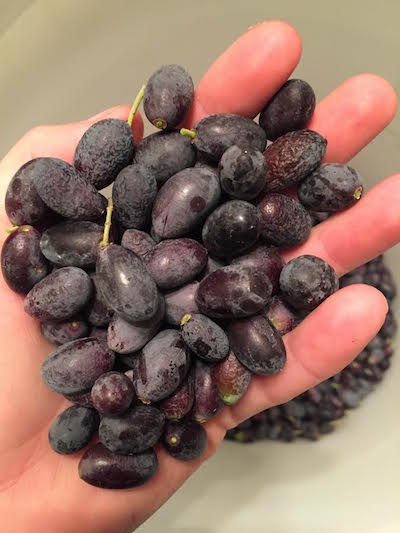posted 9 years ago
Interesting to see all of the different methods. I'm also in Portugal, and curing olives from the extreme north, almost on the border with Galicia (Minho is the region). Wendy, I think my variety is also Galega: they're small, oval-shaped fruits, and very dark in color when completely ripe. I took the advice of a friend and mixed it with various Portuguese recipes I found on the net. I only harvested maybe two kilos, as this is my first year (and I only have one olive tree!), but I divided them. I should note that I harvested in mid-October, so my olives were a mix of green to black and anywhere in between. I didn't separate by color/ripeness, and I just rinsed them in water. I think perhaps the most important rule (at least judging from what the Portuguese have told me) is to use either well water or spring water (i.e. not chlorinated).
With one portion, I left them in water in a wine cellar in glass jars, and will check on them monthly; they'll supposedly be ready in about 6 (!) months. According to my friend, this is the most "traditional" way, and as with many crops, one spends the summer consuming last year's crop. He did his olives this way last year, and I can attest that they were excellent. I didn't seal the jars that they're in, because mine were releasing some gas (CO2?), and I didn't want the jars to explode or the lids to pop off.
With the second portion, I'm changing the water every day, and usually it looks like diluted cranberry juice in color when I dump it out. I've tasted these periodically, and after about 15 days, they're definitely still bitter, but are becoming palatable. I hope that they'll be ready after about a week more.
About 1 week after starting that process, I divided the second portion as follows: I'm maintaining the same process with one bucket.
With a second bucket, I'm changing the water daily, but with salt (I usually eyeball it, about 2 teaspoons of salt per 750 ml of water).
With a third bucket, I put them into glass jars in a brine solution (90g salt, 100 ml apple cider vinegar, 1L water) with spices (peppercorn, lemon slices, coriander seeds, thyme, whole garlic cloves), screwing the lids tight. In the space at the top, I put about a finger's worth of olive oil, to keep them from contact w/ air, and stored them in the back of my cabinet in the kitchen (sadly, no cool room available!). I'll probably open one of these jars in about 2 weeks to a month to see how they're doing.
I didn't try a salt cure this year, maybe next year! Great salt is so abundant and cheap here that it would definitely be easy to try.
I have heard of two tricks to greatly reduce curing time while only using water: one either hits each olive with a wooden hammer or makes several indentations with a knife along the surface. This allows the liquid to penetrate more fully and leech out the bitterness more quickly. The drawback is that it greatly compromises the texture of the olive, and they don't keep as long. If you want olives for next week, and you're going to consume them all in a few days, I think this is the way to go.
If I remember, I'll have to report back in a few weeks when I feel they're ready. Maybe I'll post pics too if I figure it out. This year saw many firsts for me. I also harvested my chestnuts and walnuts for the first time!

 3
3

















![Filename: LecinosCuring.jpg
Description: [Thumbnail for LecinosCuring.jpg]](/t/36845/a/17772/LecinosCuring.jpg)






























 1
1









 1
1












 1
1








 1
1















